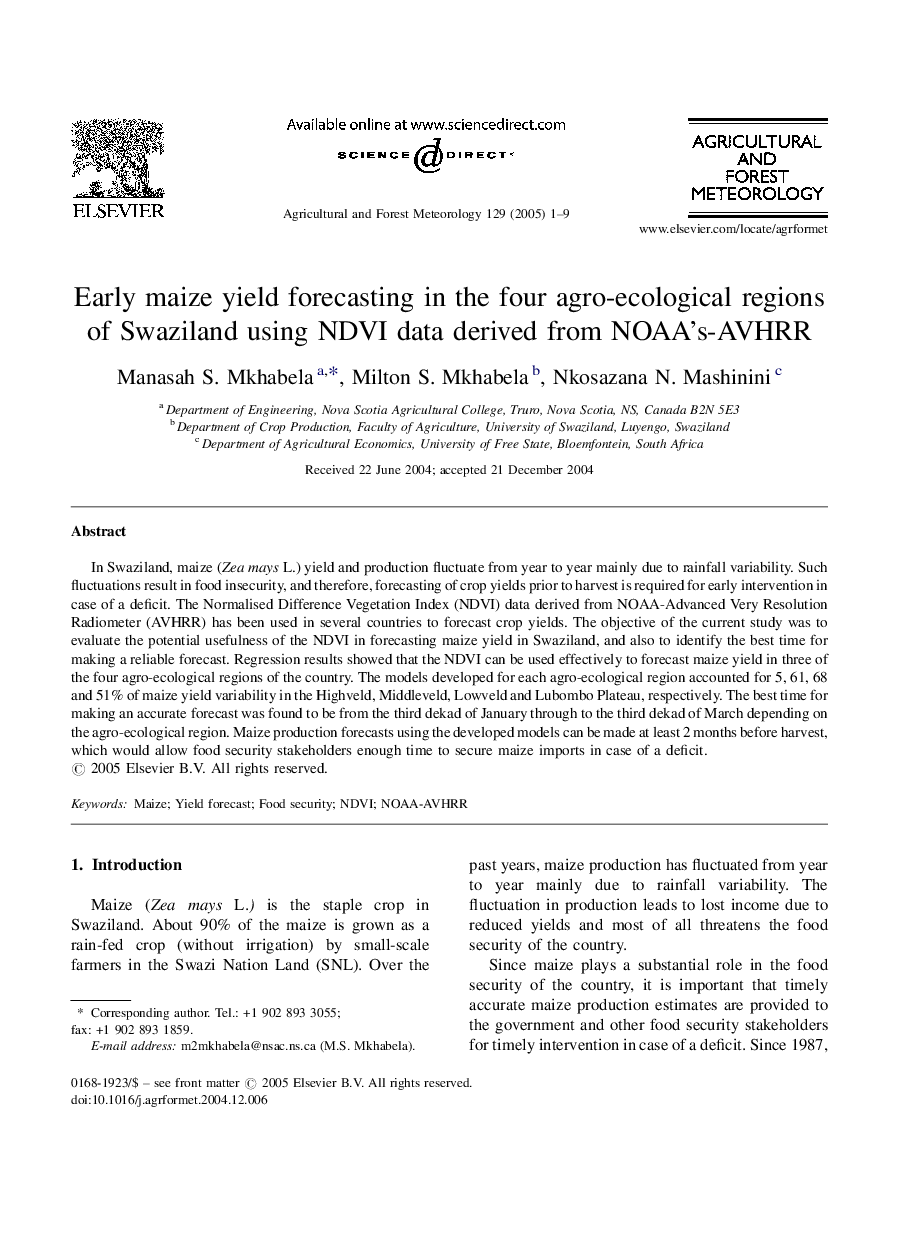| Article ID | Journal | Published Year | Pages | File Type |
|---|---|---|---|---|
| 9619526 | Agricultural and Forest Meteorology | 2005 | 9 Pages |
Abstract
In Swaziland, maize (Zea mays L.) yield and production fluctuate from year to year mainly due to rainfall variability. Such fluctuations result in food insecurity, and therefore, forecasting of crop yields prior to harvest is required for early intervention in case of a deficit. The Normalised Difference Vegetation Index (NDVI) data derived from NOAA-Advanced Very Resolution Radiometer (AVHRR) has been used in several countries to forecast crop yields. The objective of the current study was to evaluate the potential usefulness of the NDVI in forecasting maize yield in Swaziland, and also to identify the best time for making a reliable forecast. Regression results showed that the NDVI can be used effectively to forecast maize yield in three of the four agro-ecological regions of the country. The models developed for each agro-ecological region accounted for 5, 61, 68 and 51% of maize yield variability in the Highveld, Middleveld, Lowveld and Lubombo Plateau, respectively. The best time for making an accurate forecast was found to be from the third dekad of January through to the third dekad of March depending on the agro-ecological region. Maize production forecasts using the developed models can be made at least 2 months before harvest, which would allow food security stakeholders enough time to secure maize imports in case of a deficit.
Related Topics
Physical Sciences and Engineering
Earth and Planetary Sciences
Atmospheric Science
Authors
Manasah S. Mkhabela, Milton S. Mkhabela, Nkosazana N. Mashinini,
